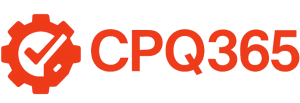If you are a reading this article, then you know enough to search for the term “Product Configurator.” What I am trying to answer in this article is what is a product configurator, what exactly you can do with one (also known as a CPQ), when you would want one, and where you simply can’t get from here to there even if you wanted to.
So, let’s breakdown, “What is a product configurator?”
The term product configurator refers to a software category, like spreadsheet software. Most people are familiar with the latter (Excel and Google Sheets for example) as they are used day to day.
You probably would not be familiar with even the biggest names in product configurators as they are rare products and used by no more than 1% of businesses.
Here are four of the biggest product configurator names that come to mind:
- Experlogix
- Tacton
- Cincom
- Infor CPQ
If you’ve heard of these products before you began your search, you are in the minority.
What Does a Product Configurator Do?
If you’re wondering “what is a product configurator,” think of it as a kind of spreadsheet software in the sense that it handles calculations and lists of information.
Out of the box these software products are designed to give a front end (an easy-to-use screen) for a user to enter information (attributes, values, etc.). That information is then used by a back end (not visible to the end user but available to a ruleset developer) to generate:
- A price for a product (sometimes broken down and sometimes just a rolled-up price).
- A description of the product (sales description).
- Manufacturing instructions (which are the BOM and Routing, CAD Drawings, etc.).
- [Optionally] a proposal document for that product.
Basically, a product configurator takes the tribal knowledge of a highly skilled person who creates quotes for complex but logically definable products and documents it so non-skilled people can reproduce the same quote.

When to Use a Product Configurator
To answer the question, what is a product configurator, it’s important to understand that you need a logically definable product if you want to use one.
This is a pretty key part of using a product configurator. I talk about this in a separate article as well, Preparing to Implement a Product Configurator.
The important thing to understand is that you must be able to define the repeatable rules of how to quote your product to use a product configurator. This type of environment—where products are customized from predefined options—is typical of Configure-to-Order manufacturing, and understanding how CTO works can help clarify whether a product configurator is right for your business.
If you need a person with a highly technical degree or equivalent experience to prepare a quote and there is no practical way to document that process (short of sending someone to university to learn) then you can’t use a product configurator.
For example: it would be totally impractical to setup a product configurator to generate a bridge design for long span bridges. There are hundreds of interrelated inputs you need to know to calculate how to build this kind of structure. You need to have civil engineers who cross reference the type of rock under the bridge, the height of water during rainy seasons, the weather, average wind speeds etc. It would take years to program all that into a ruleset which would be an astronomical cost given how few bridges are quoted.
The higher the volume of the thing you want to configure, and the better defined the options and combinations (no matter how many combinations), the more practical it is to use a configurator.
Questions, Attributes and Values … Oh My!
This category of software relies on a user interface that prompts for data. We use different terms in different configurator products for this prompted data. They can be called Questions, Attributes, Values etc. depending on the software.
The basic concept is that a user is prompted to fill in a field, and that information from that field is then used to calculate the description/instructions and price of the product they want to buy.
Description in this case is the literal written description but can also mean an engineering drawing (a visual “description”) and the bill of material and routings (the manufacturing instructions).
I will use attribute from this point forward.
One characteristic of a product configurator is that it is designed to easily and quickly present attributes to users with various ways to enter them (type in, pick from lists, pick from images etc.).

Rule Sets and Models
Most configurator software use the terms Rule Sets and Models to describe the back end.
A Rule Set is a set of low code or no code instructions used to define what happens when attributes are set. Rule sets do many different things. They can restrict choices or raise errors and warnings for bad choices (you try and add the extra wide tires to the basic bike model that can’t handle them). The rule set typically uses attributes to define the bill of material, price, and description of the product.
A Model is a core product (the top level) with an attached rule set. If Ford was a company with models and rulesets, then the Ford Escape SUV would have a model with a ruleset, and the Ford F150 would be a different model with a different ruleset.
Typically, there is a 1:1 relationship between a model and a ruleset – although in some cases many models can share the same ruleset.
The Product Configurator is a Low Code or No Code System
We use the terms low code or no code frequently today. Back when I first started working with CPQ and Product Configurators we didn’t have those terms (which is too bad because they’re a good description of what a configurator is).
The reality is that a configurator is designed to be programmed by non-programmers. Today we would say it is a low code or no code development software.
You are using the low code features of the configurator to build a self-guided quoting package. This code is designed for the single purpose of building a quoting system.
It doesn’t matter what you are quoting. You load your data into the CPQ and you setup these low code rules to make your own custom quoting tool.
Critical Features of Product Configurators or CPQ
For me to consider a product configurator to be “full featured” there are some critical features that must be present. There are also peripheral features that are often found in the top end solutions.
Critical Features of a Product Configurator
- Attribute Driven – Allows entry of non “BOM” attributes – especially true when used as a “Guided Selling” model (see below).
- Independent Price Calculations – The configurator calculates the price independently of the attributes selected.
- Generative BOM, Routing and Instructions – The configurator can generate a Bill of Material and Routing for manufacturing, including sub-BOM and sub-routings.
Common Addons Most Product Configurators Can Have
- 3D or 2D representations – Many product configurators support the ability to dynamically build a 2D or 3D image of the product. Some of these use sophisticated methods that support capabilities like Adobe Illustrator or 3D CAD software. Others use simple image replacement.
- B2B Ecommerce/CRM – Also called a “dealer portal.” This is a web store and CRM for a dealer (not an end consumer) that allows creating end client records, quotations, retrieving and searching and converting quotes into orders.
- CAD Drawing Automation – This feature allows the configurator to pass attributes and data to a CAD Software (example: SolidWorks or Inventor) and if your engineers have created parametric drawings – automatically create quote drawings or production drawings.
- Proposal Generation – This works in a manner similar to the CAD drawing automation in that the configurator can pass attributes to a document generator, and if your marketing and design team have created the right formatting, automatically generate a high-quality proposal for print or PDF emailing.
- Guided Selling – Guided selling is the mode of prompting for general information (e.g.: A temperature operating range, the type of liquid being processed) and suggesting back to the user what the right model or configuration would be.

Product Customizer vs Product Configurator
I am going to define something called a product customizer which is a simplified version of a product configurator. I want to distinguish it from the “full featured” configurator as it is missing one or more of the “Critical Features” listed above.
Product customizers tend to present the user with a set of “BOM Items” that they can select. A great example would be something to “Build a Bike” with parts. As you add parts to the customizer it rolls up a price. An IKEA closet organizer tool works in this way. You drag closet parts into a canvas and as you add things the pick list is built.
The attributes presented are always items from the BOM to be added or items that directly impact the BOM.
In day-to-day life many people interact with product customizers. They are presented to users on websites to choose characteristics or attributes when they purchase a product. For example, it might be used to buy a T-Shirt with custom artwork on it (choose your color, size, style, upload your images etc.).
Product Configuration vs CPQ
To understand the difference between a product configurator and a configure/price/quote (CPQ) let’s use the following example.
Acme manufacturers pumps for water reservoirs.
Imagine a situation where an engineer needs an Acme pump, and is presented with the following two sets of attributes:
| Design your Pump: | Design your Pump: |
|---|---|
| Intake Diameter: Output Diameter: Impeller Type: Impeller Diameter: Horsepower: Available Electrical Connection: | What are you pumping: Water, Oil, or Other Rise in Feet from Pump to Discharge: Gallons Per Hour to Pump: Size of Your Intake: Size of Your Discharge Pipe: Available Electrical Connection: |
With both scenarios the configurator can run a model, and the ruleset can generate a design and price for a pump.
For the first, the user would need to know how to calculate the correct impeller type and size, and the horsepower they would need. This is great for the skilled hydraulic engineer who doesn’t need much help designing their pump – they just want to know the price.
In the second example the system would use the information given (type of liquid, how high they need to pump it, how many gallons per hour they need to pump) and do some engineering for the user to calculate the attributes in the first example.
The first column is a classic product configurator. The second is a CPQ.
How is This Different from a Product Customizer?
Coming back to the product customizer and why it’s not a product configurator. In our example we have a Horsepower attribute or question. Horsepower itself is not a bill of material item. You need to use the Available Electrical Connection (which would be something like AC or DC and a voltage) in combination with Horsepower and determine a motor model, a starter, and probably cable information.
In a product customizer there would be a drop down for the starter, the motor, and the connecting cable. The user would need to pick them. And it might be possible to select a motor and mismatching starter (depends on how strong the ruleset writing is in the customizer).
Conclusion (What is a Product Configurator?)
A product configurator is a powerful tool used to streamline complex quoting and design processes. By using attributes, rule sets, and models, it allows manufacturers to automate and simplify the creation of accurate pricing, descriptions, and manufacturing instructions for their products. Unlike basic product customizers, a full-featured configurator handles intricate calculations and makes sure that pricing and production remain consistent.
Understanding “What is a product configurator?” is the first step toward realizing the potential it has for your business. If your products are well-defined, your processes are repeatable, and your goal is to improve efficiency and accuracy, investing in a product configurator could be a game-changing decision for your business.
Need Assistance?
Still wondering “what is a product configurator” and how it fits into your business? Let our experts guide you through the process of implementation. At ConfigurePriceQuote365, we specialize in helping manufacturing companies like yours simplify operations and select the ideal product configurator for Business Central.
Our experienced team is here to support you every step of the way. Reach out to us today and let’s get started!
